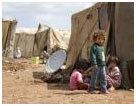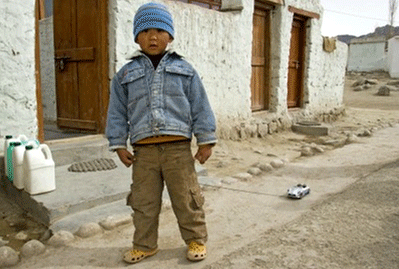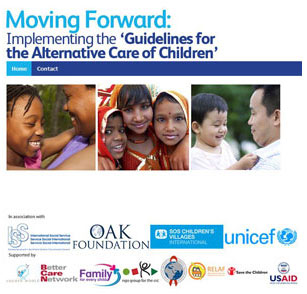Ac. Krtashivananda
SOS Children’s Villages is active in 133 countries and territories. The variety of this international work is brought together by the umbrella organisation SOS Children’s Villages International, which unites all of the autonomous national associations.
Organisational structure
In all countries where SOS Children’s Villages operates, the aim is to form a national association which is its own legal entity, with its own statutes and Board of Directors. Common for all of them is membership of the international umbrella association and the fact that their Board of Directors work on an honorary basis. Each member association is obliged to comply with the international statute of the organisation. Practices in relation to education, child-care, finance and administration are also common to all member associations.
Each national association is registered and organised as a foundation, trust, association, non-profit company or society. As a full member of SOS Children’s Villages International, they have the right to apply for funding through the umbrella association and request services from the General Secretariat.
Who we are – Our mission statement
We take action for children as an
independent non-governmental social
development organisation.
We respect varying religions and
cultures, and we work in countries and
communities where our mission can
contribute to development.
We work in the spirit of the United
Nations Convention on the Rights of
the Child and we promote these rights
around the world.
SOS Children’s Village Leh-Ladakh (India)- © B. Neeleman
OUR VISION
Every child belongs to a family and grows with love, respect and security. ..
OUR MISSION
We build families for children in need. We help them shape their own futures and we share in the development of their communities.
OUR VALUES
Courage, responsibility, trust and reliability – these are our guiding values.
News & Stories
Samples demonstrating how SOS Children’s Villages help strengthen families and address the specific needs of at-risk children are found by following STORIES.
Goals for Children
 5/4/2013 – Extreme poverty has been reduced by half. The annual death rate of children under-five and has reduced by 4.4 million. SOS Children’s Villages has played its part in reaching Millennium Development Goals. However, it warns that the clock is ticking to meet a goal for children, who remain at risk. More…
5/4/2013 – Extreme poverty has been reduced by half. The annual death rate of children under-five and has reduced by 4.4 million. SOS Children’s Villages has played its part in reaching Millennium Development Goals. However, it warns that the clock is ticking to meet a goal for children, who remain at risk. More…
No end in sight to conflict in Syria
 15/03/2013 – Two years after the conflict in Syria first began there are still no signs of peace. The UNHCR reports over a million people who have fled to neighbouring countries and countries in Northern Africa so far, half of them children. In Syria itself there are more than two million displaced persons. More…
15/03/2013 – Two years after the conflict in Syria first began there are still no signs of peace. The UNHCR reports over a million people who have fled to neighbouring countries and countries in Northern Africa so far, half of them children. In Syria itself there are more than two million displaced persons. More…
Child care in Nepal on the agenda
18/03/2013 – In June 2012 the Nepal Government, UNICEF, Save the Children and SOS Children’s Villages Nepal organised a Policy Dialogue on alternative care of children. The event was a milestone in the history of the childcare movement in Nepal. The book ‘Alternative care of children. Challenges and emerging opportunities in Nepal’ was now published.
Moving Forward:
Implementing the Guidelines for the Alternative Care of Children
|
07/03/2013 – SOS Children’s Villages is pleased to announce the launch of the handbook for the implementation of the UN Guidelines, Moving Forward: Implementing the ‘Guidelines for the Alternative Care of Children’ on 7 March at the Human Rights Council in Geneva.
|
Over two million children around the world live in care institutions. At least 80% of these have one or both parents alive. Many more children are in need of alternative care and are in danger of becoming unnecessarily separated from their families. These children are subject to higher risks of exploitation, abuse and other violations.
The Guidelines for the Alternative Care of Children, unanimously welcomed by the UN in 2009, have become an important tool for decision makers and service providers in the child care sector to address the special vulnerabilities of children deprived of their family. They mark a fundamental policy shift indicating to States that, as a first priority, they should invest in strengthening the capacity of families as well as in mechanisms to prevent separation.
Since the approval of the Guidelines, however, the continuing challenge has been their implementation. As remarked by Jean Zermatten, Chairperson of the CRC Committee*, “as with all internationally agreed standards and principles, however, the real test lies in determining how they can be made a reality throughout the world for those that they target – in this case, children who are without, or are at risk of losing, parental care”.
Implementing the Guidelines
SOS Children’s Villages is pleased to announce the launch of the handbook for the implementation of the UN Guidelines, Moving Forward: Implementing the ‘Guidelines for the Alternative Care of Children’ on 7 March at the Human Rights Council in Geneva.
The Centre for Excellence for Looked After Children in Scotland (CELCIS), together with a team of child protection experts, governments, UN Agencies, and NGOs – including SOS Children’s Villages – have been working for over a year to produce an implementation handbook. The publication Moving Forward: Implementing the ‘Guidelines for the Alternative Care of Children’ provides practical guidance on using the Guidelines to inspire reform of social welfare and alternative care systems. It highlights implications for policy-making, and provides links to what is already being effectively done on the ground. Above all, the handbook provides insight and encouragement to all professionals on what can feasibly be done in resource constrained contexts.
Matilde Luna, Project Leader from RELAF (Latin America) confirms that “the handbook provides child protection specialists and decision makers with inspiration for the design of national policies to better implement the Guidelines in Latin America. It builds on the trail-blazing progress that the region has continued to make with respect to alternative care in our region”.
SOS Children’s Villages calls upon governments and civil society to uphold the principles of the Guidelines, using the handbook to better support families to prevent unnecessary separation and protect children in need of alternative care.
The publication will be available in English, French and Spanish and in Russian atwww.alternativecareguidelines.org
*Committee on the Rights of the Child




